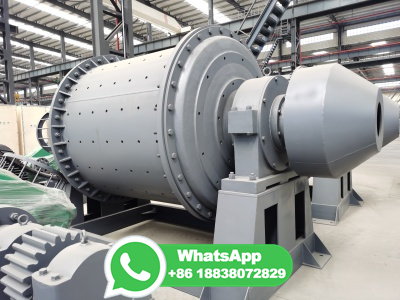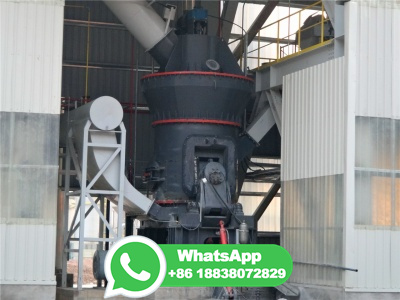
Zinc Metal Pigments ( ZMP) are extensively used in mechanical plating and galvanizing whereby small steel parts (screws, fasteners, rivets, bolts, etc.) are coated with a very thin, uniform layer of zinc, which provides enhanced corrosion protection without the introduction of hydrogen embrittlement. Sherardizing is a process in which a zinc ...


· Plant extracts mediated synthesis of ZnO nanoparticles has been carried out recently in many plant species like Camellia sinensis 7, Ficus benghalensis 8, Punica granatum 9, Trifolium pretense 10, Hibiscus subdariffa 11, Aloe vera 12, Citrus aurantifolia 13, Parthenium hysterophorus 14 have been reported in Zinc oxide nanoparticles synthesis by different workers 13, 14, 15.


absorption for sinter plants or lime spraying in flue gases. Steel Manufacturing • Use dry dust collection and removal systems to avoid the generation of wastewater. Recycle collected dust. • Use BOF gas as fuel. • Use enclosures for BOF. • Use a continuous process for casting steel to reduce energy consumption. Other


Heavy metal pollution in soil and water is a global environmental concern. In Vietnam, accumulation of heavy metals in soil, water and plant biomass has been widely reported. Cultivation of crops on contaminated sites may result in both growth inhibition and tissue accumulation of heavy metals with resulting possible risks to humans health.


multifunctional inorganic nanoparticles and Zinc Oxide crystallites have been synthesized by simple and ecofriendly method. There is a growing attention to biosynthesis the metal nanoparticles using organisms. Among these organisms,plants seem to be the best candidate and they are suitable for large scale biosynthesis of nanoparticles ...


Abstract. Extractable contents of heavy metals such as Cr, Mn, Fe, Co, Ni, Cu, Zn, Cd, Pb and Bi in soil and plant tissue samples (fruit, leaf, twig and root) collected, along a distance of 1100 m to the West, from the surroundings of a metallurgical factory producing mainly zinc, cadmium and lead were determined by flame atomic absorption spectrometry (FAAS).


Metal sensitive plants have great difficulties in reaching the reproductive phase when exposed to metals. The seeds of most plant species growing on heavy metal enriched soils have very low metal concentrations [38, 62]. Zincresistant genotypes of Silene vulgaris were stimulated by increased levels of zinc.


nonmetals, and will react with dilute acids to release hydrogen [9]. Its uses are quite variable from galvanization of steel to the manufacture of the negative plate in electrical batteries, passing through the preparation of some alloys. As a pigment, zinc is used in plastics,


· Mild steel sheeting rapidly replaced wrought iron as the base metal following improved steel making and processing methods later in the 19th century. The first Australian galvanising works were set up in Sydney in 1863 and Lysaght's plant in Newcastle began producing corrugated galvanised roofing on 4 April 1921.



Metal ion affinities and aspects of energetics had been revealed by earlier work, showing activation optima in the range of –1 µM (Hung et al., 2007 for human ATP7A; Leitenmaier et al., 2011 for plant HMA4), activation energies of 17–42 kJ mol −1 depending on the pumped metal ion and its concentration, and highaffinity binding via the cysteines (Leitenmaier et al., 2011).


Zinc plant leach residues (ZPLRs) contain significant amounts of metal compounds of lead (Pb), zinc (Zn), iron (Fe), etc., hence, they are considered as a secondary source of metals. On the other hand, ZPLRs are regarded as hazardous materials because they contain heavy metals that pollute the environment. Resources and environmental concerns of ZPLRs were addressed in this study by .


· Mittal AK, Chisti Y, Banerjee UC (2013) Synthesis of metallic nanoparticles using plant extracts. Biotechnol Adv 31(2):346–356. Article Google Scholar 43. Iravani S (2011) Green synthesis of metal nanoparticles using plants. Green Chem 13(10):2638–2650. Article Google Scholar 44.


· Coat the zincplated metal with galvanized metal etching primer, using a roller and a shedfree roller cover. Roll one threebythree foot section at a time. Stop and smooth the wet etching primer, using a polyester paintbrush. Brush vertically, applying slight pressure. Allow the zinc plating to dry for three hours. Advertisement.


· ZINCDUST PRECIPITATION OF GOLD. For many years precipitation by zinc dust, as by the MerrillCrowe process, has been recognized as the most efficient and economical method of precipitating gold and silver from cyanide precipitate filters of the plateandframe type, of the vacuumleaf type, or of the more recently developed pressure bagfilter type, the process is in use ...


india manganese ore crushing plant amroninternational. such as use manganese ore crushing plant to crush manganese ore into small size can supply you with the version of manganese ore crusher, crushing amp processing unit ore manganese plant materials pearl coke,coal,iron ore,carbon paste, feb crushing and screening plant for manganese ore mining tph iron crusher for manganese



Zinc. Zinc is mainly used to galvanise steel or iron – that is, to apply a zinc coating to stop it rusting. Galvanised steel is used in buildings, cars, white goods and electronics. The strength and flexibility of zinc alloys mean they are widely used to create die casts for industrial uses – for example, in the production of car or machine ...


Zinc ligands in the metal hyperaccumulator Thlaspi caendescens as determined using Xray absorption specrroscopy. Environ Sci Technol 33: 713717 >'.'•: Salt DE, Blaylock M, Kumar PBAN, Dushenkov V, Ensley BD; Chefl,.Raskin I. 1995. Phytoremediation: A novel strategy for the removal of toxic metals frorrrthe' plants.


· Green synthesis nanoparticle production through plants, bacteria, fungi, and algae allows for the largescale production of metal oxide particles free of impurities [].Different physical and chemical processes are now widely used to synthesize metal oxide nanoparticles, allowing one to obtain particles with desired characteristics.


· GHGRP Metals. The metals sector consists of metal production facilities that smelt, refine, and/or cast ferrous and nonferrous metals, including primary aluminum, ferroalloy, iron and steel, lead, magnesium, and zinc, from ore, pig, or scrap using electrometallurgical and other methods. The sector also includes foundries and any other metal ...




· Raskin, Ilya, Robert D Smith, and David E Salt. "Phytoremediation of metals: Using plants to remove pollutants from the environment." Current Opinion in Biotechnology 8 (1997): 221–6. Reeves, Roger D., and Robert Richard Brooks. "Hyperaccumulation of lead and zinc by two metallophytes from mining areas of Central Europe."


and metals in other chemical forms may be present. Offgases contain fine dust particles and volatile impurities such as arsenic, fluorine, and mercury. Air emissions for processes with few controls may be of the order of 30 kilograms lead or zinc per metric ton (kg/t) of lead or zinc produced. The presence of metals in vapor form is

إذا كنت مهتما في شركتنا أو المنتجات، ترحيب لزيارة شركتنا أو المكاتب المحلية. يمكنك أيضا الحصول على الاتصال معنا من خلال الاستشارات عبر الإنترنت، وتقديم الطلب الجدول، والبريد الإلكتروني والهواتف. موظفينا يجب بكل إخلاص تقديم معلومات المنتج، تطبيق المعرفة و خدمة جيدة بالنسبة لك.
Copyright © .CNمحطم All rights reserved.Sitemap